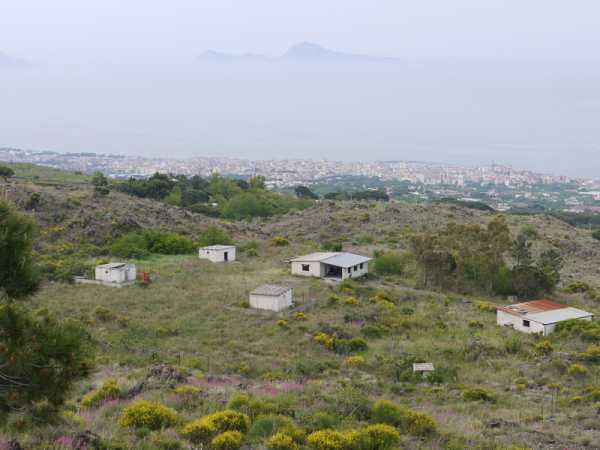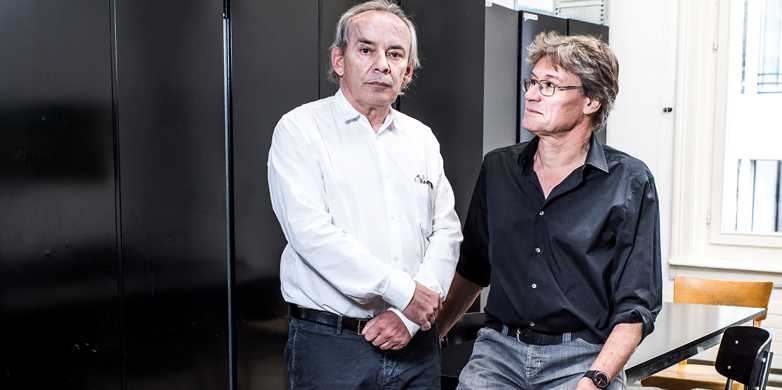The urbanised world
Urbanisation is transforming the world. In an interview with Marcel Meili, ETH Professor of Architecture and Design, and Christian Schmid, Deputy Head of Network City and Landscape, the two explain why cities around the world are expanding and what is special about the urban landscape in Switzerland.
In a publication entitled The Inevitable Specificity of Cities, architects Roger Diener, Jacques Herzog, Marcel Meili, Pierre de Meuron and sociologist Christian Schmid from ETH Studio Basel, Contemporary City Institute, describe how the world is becoming urbanised. The book appears 10 years after their controversial 2005 publication Switzerland: An Urban Portrait, in which they suggested that Switzerland was a fully urbanised country.
Mr Meili, Mr Schmid, what is typical of the global emergence of urban landscapes?
Christian Schmid: Metropolitan regions continue to expand around the globe. Together with the surrounding hinterland, they are creating new, large-scale cityscapes that extend far into previously rural or uninhabited areas. We refer to this phenomenon as “planetary urbanisation”. The world's largest urban landscape is located on the Pearl River delta, where the megacities of Hong Kong, Shenzhen, Dongguan, Guangzhou, Foshan and Macao overlap to form a highly dynamic settlement area and industrial region.
Marcel Meili: While we observe these urbanisation phenomena all over the world, they do not play out the same way in all regions; there are differences between Naples, Nairobi, Beirut, the Canary Islands and Switzerland. The Brazilian metropolis of Belo Horizonte, for example, has been shaped by the mining industry from the outset. This impact is not only reflected in the type of settlements, but in policy, construction legislation, and the lifestyles of the people there.
What is specific to Switzerland's urbanisation?
Marcel Meili: Basel, Geneva, and Zurich are large-scale, internationally connected metropolitan areas, while the medium-sized cities are relatively significant regional centres. Switzerland's urban landscape forms a “pearl necklace” stretching from Lake Constance to Lake Geneva. The urbanised, yet still predominantly agricultural areas we refer to as “quiet zones” are connected with these urban areas.
Ten years ago your “urban portrait” book prompted a large-scale debate about regional development in Switzerland. What do you think of that debate now?
Christian Schmid: We succeeded in changing the idyllic, exaggerated image of a rural Switzerland. Even the planning discussion back then was still firmly rooted in the idea that urban and rural areas are separate and that agglomerations spread out like rings around core cities. By demonstrating that Switzerland is fully urbanised and composed of different urban landscapes, we and others were able to contribute to a paradigm shift in Swiss policy and spatial planning.
Marcel Meili: We were not the only ones back then to develop large-scale models for urbanisation. Our portrait was noteworthy in that it was not simply a book about architecture. It wasn't so much about specific high-rises or industrial complexes, but more about people's living conditions and how they develop their territories. Part of the portrait's impact can be explained by the fact that some people saw their living situations reflected in the descriptions.
What effect did the urban portrait have on policy and urban planning in Switzerland?
Marcel Meili: The consideration of large-scale urban contexts plays a greater role in politics than it did 10 years ago. We talk differently about settlement structures. In the greater Zurich area, for example, the “Metropolitan Conference” provides a platform for cross-regional collaboration. In this regard, our portrait served as a sort of “intellectual engineering”, a development project for people's attitudes. But the portrait had little influence on the actual planning and legislation in the cantons and municipalities.
Christian Schmid: On the municipality level, it's also less about general development plans than concrete tax or economic policies. There's still a need for delimiting oneself from the neighbour – for example, the Stadtbahn Glattal railway has a white-blue colour scheme instead of the blue-white of the Zurich trams. Many aspects of our territorial analysis did, however, influence Raumkonzept Schweiz (Spatial Concept Switzerland), which is the Swiss Confederation's concept for settlement, transportation, infrastructure and landscape planning.
Another controversial term at the time was “alpine fallow lands”, which refers to agricultural regions experiencing difficult economic times and persistent depopulation.
Christian Schmid: In Portrait we developed a new approach for studying urban phenomena outside of cities, that is, in alpine regions too. One example of an urban phenomenon in the Alps is the building of second homes, which was largely restricted by the referendum voted on in 2012.
Marcel Meili: We also saw the alpine fallow land as an urban phenomenon. Depopulation and economic degradation of alpine valleys are not antithetical to urban developments – they're closely intertwined. Roger Diener and I have since continued to develop our approach using the generic term “territory”. Our book, planned for 2016, describes how the Earth's surface is being urbanised on a massive scale all around the world.
Publications by ETH Studios Basel
The Inevitable Specificity of Cities. Published by ETH Studio Basel. Contributors: Roger Diener, Mathias Gunz, Manuel Herz, Jacques Herzog, Rolf Jenni, Marcel Meili, Shadi Rahbaran, Christian Schmid, Milica Topalovic. Approx. 300 illustrations, approx. 320 pages, Lars Müller Publishers, Zurich, 2015.
Switzerland: An Urban Portrait Published by ETH Studio Basel. Roger Diener, Jacques Herzog, Pierre de Meuron, Marcel Meili, Christian Schmid. 4 volumes, 1,020 pages, Birkhäuser-Verlag für Architektur, Basel, 2005.
Examples of urbanisation phenomena
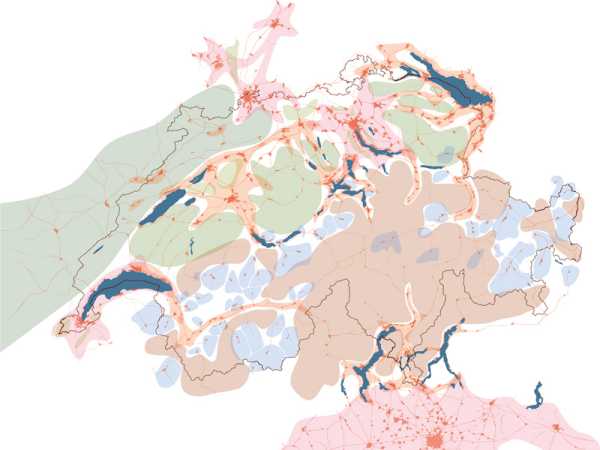 Tin Shui Wai New Town in Hong Kong: what was once home to fish ponds and wetlands is today an entire new urban district. (Photo: Sasalove)
Tin Shui Wai New Town in Hong Kong: what was once home to fish ponds and wetlands is today an entire new urban district. (Photo: Sasalove) Selective building on hilltops in the mining region: urban development in the Brazilian metropolis of Belo Horizonte. (Photo: ETH Studio Basel)
Selective building on hilltops in the mining region: urban development in the Brazilian metropolis of Belo Horizonte. (Photo: ETH Studio Basel)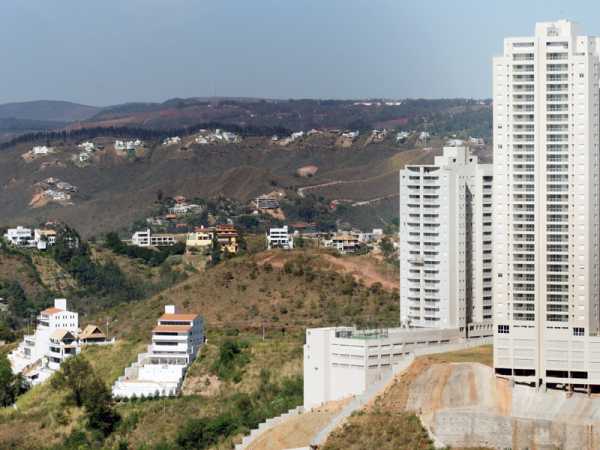 Urbanisation in holiday paradise: terraced houses in Santa Cruz, Tenerife in the Canary Islands. (Photo: ETH Studio Basel)
Urbanisation in holiday paradise: terraced houses in Santa Cruz, Tenerife in the Canary Islands. (Photo: ETH Studio Basel)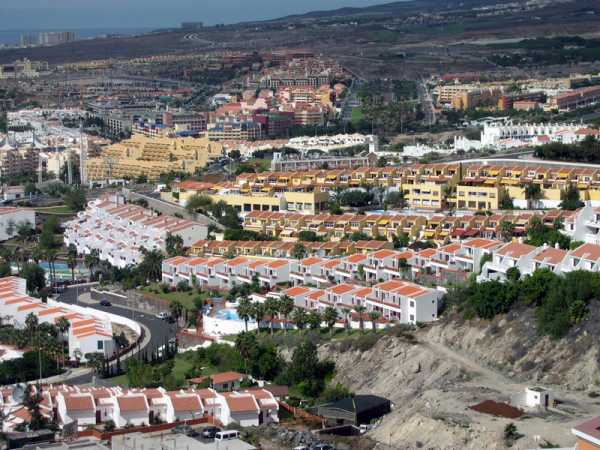 Although several hundred thousand people live in Nairobi's district of Kirabi, there are no multi-storey buildings there. (Photo: Manuel Herz and Shadi Rahbaran)
Although several hundred thousand people live in Nairobi's district of Kirabi, there are no multi-storey buildings there. (Photo: Manuel Herz and Shadi Rahbaran) Beauty under threat: Naples in the shadow of Vesuvius. (Photo: ETH Studio Basel)
Beauty under threat: Naples in the shadow of Vesuvius. (Photo: ETH Studio Basel)